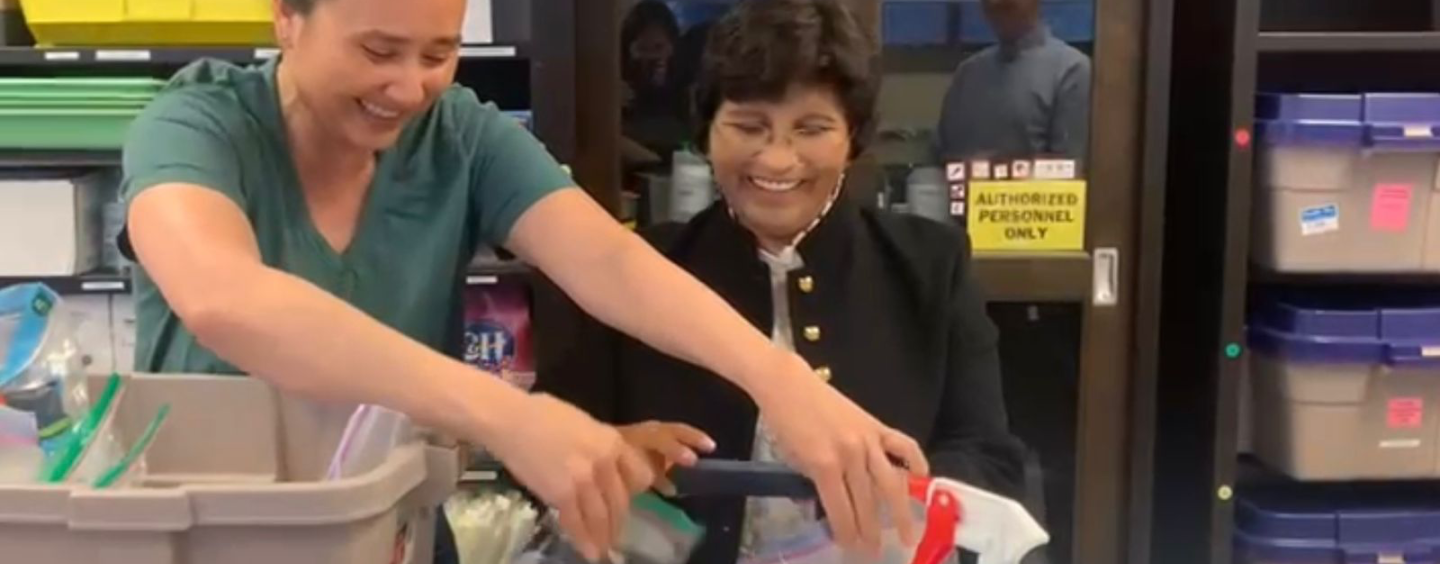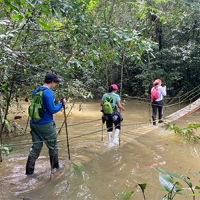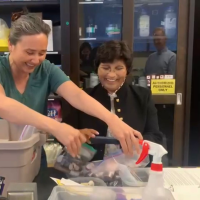Peruvian Connection Extends from Frogs to Community Service Learning

As a Peruvian environmental biologist, Dr. Luz Wilfreda Cusi Zamata was drawn to the puzzle of what SF State biologists had learned was killing the frogs in a tributary of Lake Titicaca, her watery backyard at the Universidad Nacional del Altiplano-Puno (UNAP-P). But as an educator, she was just as intrigued by how her colleagues teach scientific method to non-majors.
Then, faculty ambassadors for the Institute for Civic and Community Engagement inspired an idea for how to transform student teaching into service learning at UNAP-P’s Department of Education.
These were the initial results this summer as faculty and staff from across the campus shared experiences and insights with visiting Peruvian colleagues exploring innovative approaches to teaching and student involvement in research and community service. Cusi Zamata and Maricela Portillo, a faculty member at both UNAP and Santa Clara University, are the vanguard of a team investigating new methods and structures as the Peruvian university revises its curriculum.
They met with Dr. Vance Vredenburg, chair, and Dr. Kimberly Tsui, undergraduate labs coordinator, of the Department of Biology, and Dr. Pavlina Latkova, Department of Recreation, Parks & Tourism, and Dr. Aritree Samanta, School of the Environment, in interviews facilitated by Latin American Studies and the International Relations Department.
“I am sure that all the learning I am taking with me will resound in my colleagues and students,” Cusi Zamata said, shortly before returning to Peru in July.
Like SF State, UNAP-P is a state institution with a strong commitment to community involvement, reinforced by a significant population of underserved students, particularly members of Quechua and Aymara groups. The visit also underlined more connections between UNAP-P and San Francisco State:
- Vredenberg not only used DNA research to identify the fungus killing the Peruvian frogs in 2012, he returned five years later to conduct a follow-up study to determine whether the frogs had recovered. They hadn’t. As a bonus, the Mexican-born Vredenberg was able to speak directly with the Peruvians about his research and teaching.
- Latkova co-authored, with Dr. Logan Hennessy of the Department of Liberal Studies and then-graduate student Jill Huinder, a book chapter on how community-based tourism has allowed Quechua in the Andean highlands to not only safeguard their cultural heritage but also forge sustainable pathways for economic development. Cusi Zamata said the study helped strengthen her resolve to validate the language and community knowledge of the Quechua students at UNAP-P.
SF State has a cooperation memorandum in effect with UNAP-P that International Relations alumnus Isaac Cisneros availed himself of for assistance in conducting field research for his thesis on international smuggling. Students and faculty from any department are welcome to request collaboration under the memorandum.
Another connection is that Portillo participated in Spanish and International Relations graduate seminars on campus.
After reviewing the initial findings, UNAP-P plans a follow-up visit, possibly as early as Fall semester.
Tags

